Growing Chayote at Home might sound like an exotic culinary adventure, but trust me, it’s more achievable than you think! Have you ever dreamt of harvesting your own unique, pear-shaped vegetable right in your backyard? Imagine the satisfaction of serving a dish featuring a homegrown ingredient that sparks conversation and adds a touch of the unusual to your meals.
Chayote, also known as vegetable pear or mirliton, has a fascinating history. Originating in Mesoamerica, it was a staple food for the Aztecs and Mayans. Today, it’s enjoyed worldwide in diverse cuisines, from stir-fries to soups. But why buy it at the store when you can easily cultivate your own supply?
Many people shy away from home gardening, thinking it’s too complicated or time-consuming. But growing chayote at home is surprisingly simple, even for beginners! This DIY guide will provide you with easy-to-follow tricks and hacks that will transform your garden into a chayote haven. Not only will you save money on groceries, but you’ll also enjoy the health benefits of fresh, organically grown produce. Plus, you’ll have the satisfaction of knowing exactly where your food comes from. So, let’s get started and unlock the secrets to successfully growing chayote in your own backyard!
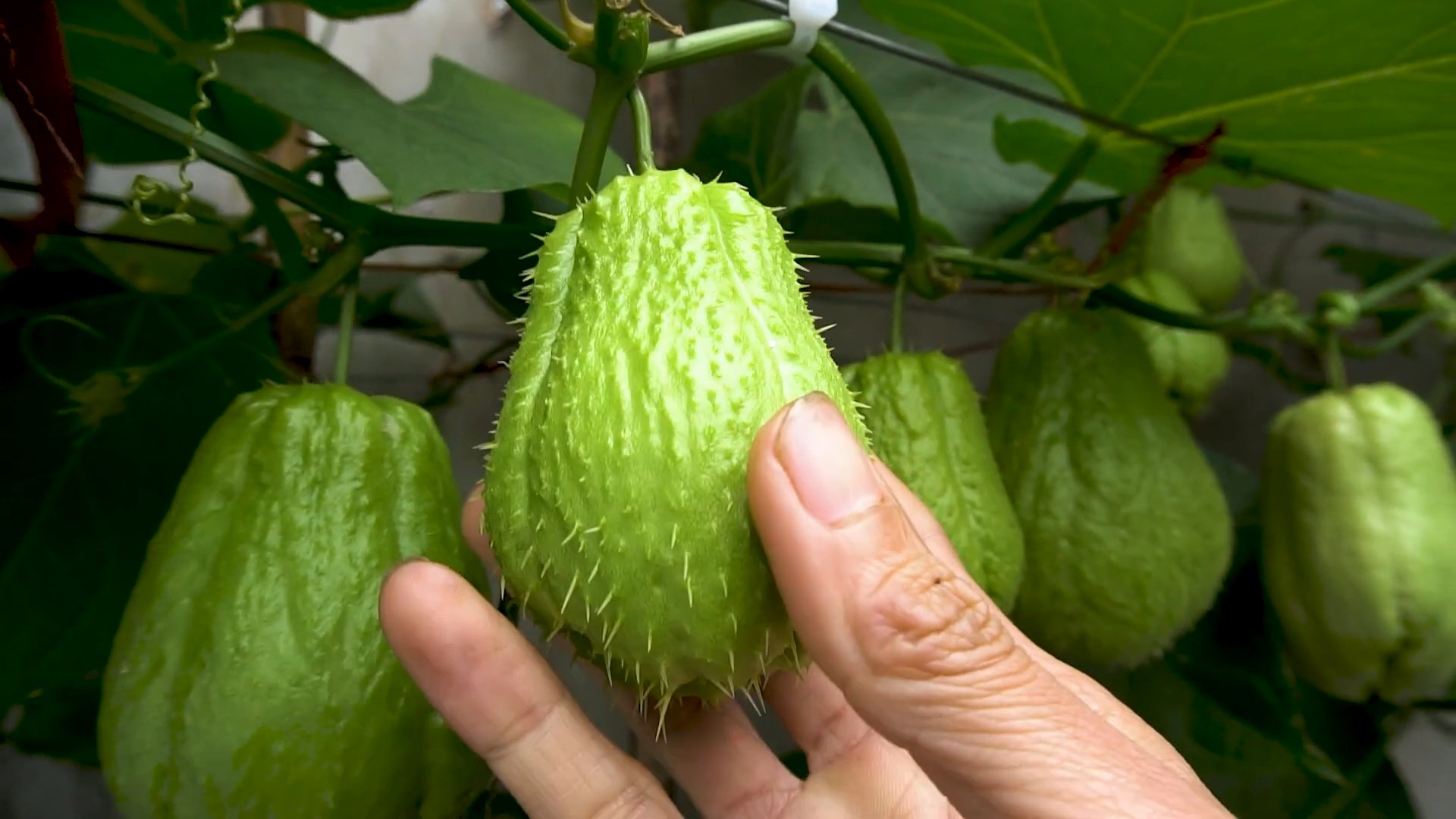
Growing Chayote at Home: A Comprehensive DIY Guide
Hey there, fellow gardening enthusiasts! Ever thought about growing your own chayote squash? It’s surprisingly easy and rewarding. This guide will walk you through everything you need to know, from prepping the seed to harvesting your very own chayote. Let’s get started!
Understanding Chayote
Before we dive into the nitty-gritty, let’s talk a bit about chayote itself. Chayote (Sechium edule), also known as mirliton or vegetable pear, is a type of squash that’s native to Central America. It’s a vigorous vine that produces pear-shaped fruits, which are delicious and versatile in the kitchen. The entire plant is edible, including the fruit, leaves, shoots, and even the root!
Why grow chayote?
* It’s a prolific producer, meaning you’ll get a lot of fruit from just one plant.
* It’s relatively low-maintenance once established.
* It’s a great way to add a unique and nutritious vegetable to your diet.
* It’s a conversation starter! How many people do you know who grow chayote?
Preparing the Chayote “Seed” (The Whole Fruit!)
Okay, here’s the thing about chayote: you don’t plant seeds in the traditional sense. You plant the entire fruit! That’s right, the whole shebang. This is because the seed germinates *inside* the fruit.
Choosing the Right Fruit:
* Look for a mature fruit: You want a chayote that’s plump, firm, and free from blemishes or soft spots. It should be a healthy green color.
* Sprouting is a plus: Ideally, you want a chayote that has already started to sprout. You might see a small root emerging from the bottom or a shoot peeking out from the top. This means it’s ready to go! If you can’t find one already sprouting, don’t worry; we’ll get it to sprout ourselves.
* Avoid damaged fruit: Any cuts or bruises can lead to rot, so choose a fruit that’s in good condition.
Sprouting Your Chayote (If Necessary):
If your chayote isn’t already sprouting, here’s how to encourage it:
1. Wrap it up: Wrap the chayote in a damp paper towel.
2. Bag it: Place the wrapped chayote in a plastic bag or container. This will help retain moisture.
3. Warm and dark: Store the bag in a warm, dark place, like a kitchen cabinet or pantry.
4. Check regularly: Check the chayote every few days to make sure the paper towel is still damp. If it’s drying out, re-wet it.
5. Be patient: It can take a few weeks for the chayote to sprout, so don’t give up! Once you see a root or shoot emerging, it’s ready to plant.
Planting Your Chayote
Now for the fun part: getting that chayote in the ground!
Choosing the Right Location:
* Sunlight: Chayote needs plenty of sunlight – at least 6-8 hours per day.
* Space: Remember, chayote is a vine, and it can grow *big*. Give it plenty of room to spread out. A trellis, fence, or sturdy arbor is essential. Think about where you want the vine to climb and make sure there’s enough space for it to do so.
* Soil: Chayote prefers well-drained soil that’s rich in organic matter. Amend your soil with compost or well-rotted manure before planting.
* Protection from wind: While chayote is relatively hardy, it’s best to protect it from strong winds, which can damage the vine.
Planting Instructions:
1. Prepare the soil: Dig a hole that’s about twice the size of the chayote fruit.
2. Amend the soil: Mix compost or well-rotted manure into the soil you removed from the hole.
3. Position the chayote: Place the chayote in the hole with the sprouted end (if there is one) pointing slightly upwards. If there’s no sprout yet, lay the fruit horizontally.
4. Cover it up: Cover the chayote with the amended soil, leaving the top third of the fruit exposed.
5. Water well: Water the newly planted chayote thoroughly.
6. Mulch: Add a layer of mulch around the base of the plant to help retain moisture and suppress weeds.
Caring for Your Chayote Vine
Once your chayote is planted, it’s time to provide it with the care it needs to thrive.
Watering:
* Keep it consistent: Water your chayote regularly, especially during dry periods. The soil should be consistently moist, but not waterlogged.
* Deep watering: Water deeply, allowing the water to soak into the soil. This encourages deep root growth.
* Avoid overhead watering: Try to avoid watering the leaves, as this can increase the risk of fungal diseases.
Fertilizing:
* Start slow: After planting, wait a few weeks before fertilizing.
* Use a balanced fertilizer: Use a balanced fertilizer (e.g., 10-10-10) according to the package directions.
* Organic options: You can also use organic fertilizers, such as compost tea or fish emulsion.
* Fertilize regularly: Fertilize your chayote every few weeks during the growing season.
Pruning:
* Control the growth: Chayote vines can grow very quickly, so pruning is important to keep them under control.
* Remove dead or damaged vines: Prune away any dead, damaged, or diseased vines.
* Thin out the vine: Thin out the vine to improve air circulation and sunlight penetration.
* Encourage fruit production: Pruning can also encourage fruit production.
Providing Support:
* Trellis, fence, or arbor: As mentioned earlier, chayote needs a strong support structure to climb on.
* Train the vine: Train the vine to climb the support structure by gently guiding it and tying it in place if necessary.
* Regular checks: Regularly check the support structure to make sure it’s strong enough to support the weight of the vine and the fruit.
Pest and Disease Control:
* Monitor regularly: Keep an eye out for pests and diseases.
* Common pests: Common pests of chayote include aphids, squash bugs, and spider mites.
* Organic pest control: Use organic pest control methods, such as insecticidal soap or neem oil, to control pests.
* Common diseases: Common diseases of chayote include powdery mildew and fungal leaf spots.
* Good air circulation: Ensure good air circulation around the plant to prevent fungal diseases.
* Fungicides: If necessary, use a fungicide to control fungal diseases.
Harvesting Your Chayote
The moment you’ve been waiting for! Harvesting your own chayote is incredibly satisfying.
When to Harvest:
* Size: Chayote is typically harvested when it’s about 4-6 inches long.
* Tenderness: The fruit should be firm and tender.
* Color: The color should be a healthy green.
* Don’t wait too long: Don’t let the chayote get too large or it will become tough and fibrous.
How to Harvest:
1. Use pruning shears or a sharp knife: Cut the chayote from the vine, leaving a short stem attached.
2. Handle with care: Handle the chayote gently to avoid bruising it.
Storing Chayote:
* Cool and dry: Store chayote in a cool, dry place, like the refrigerator.
* Plastic bag: Place the chayote in a plastic bag to help retain moisture.
* Use within a few weeks: Chayote will typically last for a few weeks in the refrigerator.
Using Your Chayote
Now that you’ve harvested your chayote, it’s time to get cooking! Chayote is a versatile vegetable that can be used in a variety of dishes.
Preparation:
* Wash thoroughly: Wash the chayote thoroughly before using it.
* Peel (optional): You can peel the chayote if you prefer, but it’s not necessary. The skin is edible.
* Remove the seed: Cut the chayote in half and remove the seed.
Cooking Methods:
* Raw: Chayote can be eaten raw in salads or as
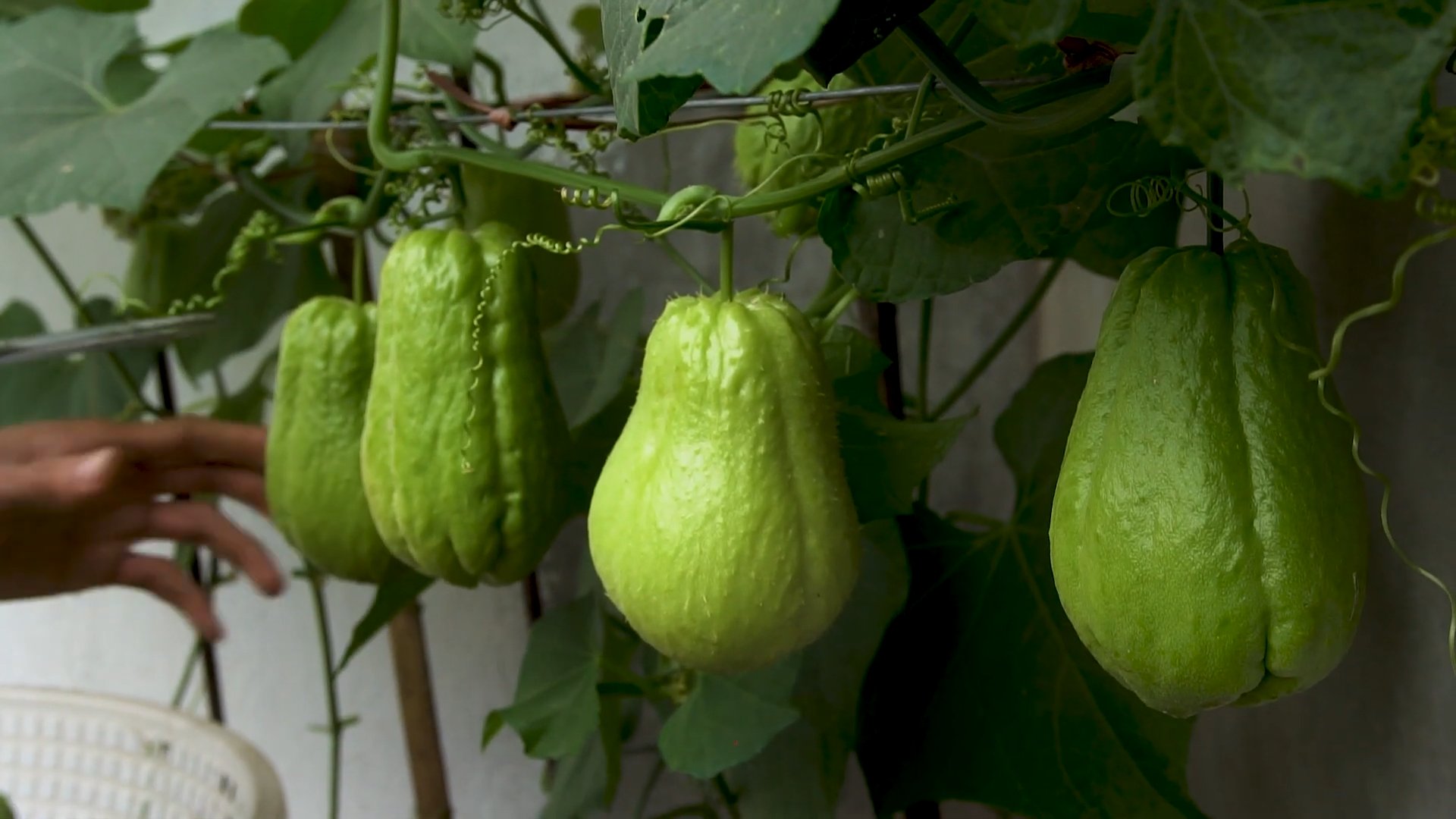
Conclusion
So, there you have it! Growing chayote at home is not only achievable, but it’s a deeply rewarding experience that connects you to the source of your food. Forget those bland, mass-produced vegetables from the supermarket; imagine the satisfaction of harvesting your own vibrant, flavorful chayote, knowing exactly where it came from and how it was grown. This DIY trick transforms a simple vegetable into a thriving vine, offering a sustainable and delicious addition to your garden and your table.
Why is this a must-try? Because it’s more than just growing a vegetable; it’s about embracing a more self-sufficient lifestyle, reducing your carbon footprint, and enjoying the unparalleled taste of homegrown produce. Plus, chayote is incredibly versatile in the kitchen. You can use it in stir-fries, soups, salads, or even pickle it for a tangy treat. The possibilities are endless!
Looking for variations? Consider growing your chayote vine on a sturdy trellis or pergola to create a beautiful and functional green space. Experiment with different soil amendments to find what works best in your local climate. You can also try growing chayote in containers if you have limited garden space, just be sure to choose a large pot and provide adequate support for the vine. For those in colder climates, starting the chayote indoors before transplanting it outdoors can give it a head start and extend your growing season. Another interesting variation is to experiment with different chayote varieties. While the standard green chayote is most common, you might be able to find white or even spiny varieties, each with its own unique flavor and texture.
We’ve armed you with the knowledge and the steps; now it’s your turn to get your hands dirty! Don’t be intimidated by the process. Growing chayote at home is surprisingly easy, and the rewards are well worth the effort. We encourage you to give this DIY trick a try and experience the joy of harvesting your own delicious chayote.
But don’t stop there! We want to hear about your experiences. Share your tips, tricks, and triumphs in the comments below. Let us know what worked for you, what challenges you faced, and what delicious dishes you created with your homegrown chayote. Your insights can help other aspiring gardeners embark on their own chayote-growing adventures. Let’s build a community of chayote enthusiasts and share the bounty of our gardens!
Frequently Asked Questions (FAQ)
What is the best time to plant chayote?
The ideal time to plant chayote depends on your climate. In warmer regions with mild winters, you can plant chayote in the late winter or early spring, after the last frost. In colder regions, it’s best to start the chayote indoors about 6-8 weeks before the last expected frost and then transplant it outdoors once the weather has warmed up and the risk of frost has passed. The key is to ensure the soil temperature is consistently warm enough for the chayote to sprout and thrive. Aim for a soil temperature of at least 65°F (18°C).
How much space does a chayote vine need?
Chayote vines are vigorous growers and require ample space to spread. A single vine can easily cover an area of 15-20 feet in length and width. Therefore, it’s crucial to provide a sturdy trellis, fence, or pergola for the vine to climb on. If you’re planting multiple chayote, space them at least 10-15 feet apart to allow for adequate growth and air circulation. Proper spacing will also help prevent the spread of diseases and pests.
What kind of soil is best for growing chayote?
Chayote thrives in well-draining soil that is rich in organic matter. Before planting, amend the soil with compost, aged manure, or other organic materials to improve its fertility and drainage. A slightly acidic to neutral soil pH (around 6.0 to 7.0) is ideal. Avoid heavy clay soils, as they can become waterlogged and hinder root growth. If you have clay soil, consider adding sand or perlite to improve drainage.
How often should I water my chayote vine?
Chayote requires consistent moisture, especially during the growing season. Water deeply and regularly, ensuring the soil remains consistently moist but not waterlogged. The frequency of watering will depend on your climate and soil type. In hot, dry weather, you may need to water daily, while in cooler, wetter weather, you can water less frequently. A good rule of thumb is to check the soil moisture level regularly and water when the top inch of soil feels dry to the touch. Mulching around the base of the vine can help retain moisture and suppress weeds.
What are some common pests and diseases that affect chayote?
While chayote is relatively pest-resistant, it can be susceptible to certain pests and diseases, including aphids, spider mites, squash bugs, and powdery mildew. Regularly inspect your vine for signs of infestation or disease. If you spot any problems, take action promptly. For aphids and spider mites, you can try spraying the vine with a strong stream of water or using insecticidal soap. For squash bugs, handpicking them off the vine is often the most effective method. To prevent powdery mildew, ensure good air circulation around the vine and avoid overhead watering. You can also apply a fungicide if necessary.
How do I know when my chayote is ready to harvest?
Chayote is typically ready to harvest about 3-4 months after planting. The fruits should be firm, smooth, and light green in color. The skin should be tender enough to pierce easily with your fingernail. Avoid harvesting chayote that is overly mature, as it can become tough and fibrous. Regular harvesting will encourage the vine to produce more fruits.
Can I eat the chayote leaves and shoots?
Yes, the young leaves and shoots of the chayote vine are edible and can be used in salads, stir-fries, and soups. They have a mild, slightly sweet flavor similar to spinach or zucchini. Harvest the leaves and shoots when they are young and tender, as older leaves can become tough and bitter.
How do I store chayote after harvesting?
Chayote can be stored in the refrigerator for several weeks. Wrap the chayote in a plastic bag or container to prevent it from drying out. Avoid storing chayote near ethylene-producing fruits, such as apples and bananas, as this can cause it to ripen and spoil more quickly.
Can I grow chayote in a container?
Yes, you can grow chayote in a container, but you’ll need to choose a large pot (at least 20 gallons) to accommodate the vine’s extensive root system. Use a well-draining potting mix and provide a sturdy trellis or support for the vine to climb on. Container-grown chayote may require more frequent watering and fertilization than those grown in the ground.
Is chayote a perennial or an annual?
In warmer climates (USDA zones 8-11), chayote is a perennial, meaning it can live for several years. In colder climates, it is typically grown as an annual, as the vine will die back in the winter. However, you can overwinter the chayote tuber indoors in a cool, dark place and replant it in the spring.


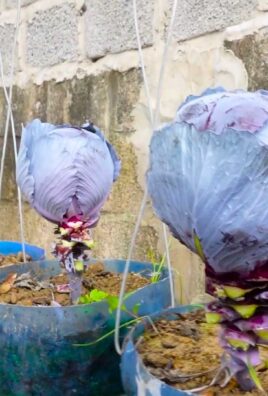
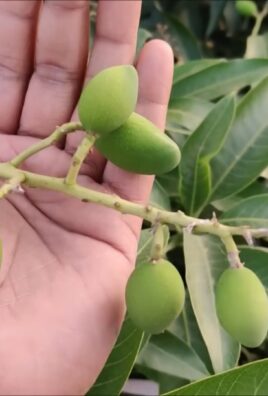
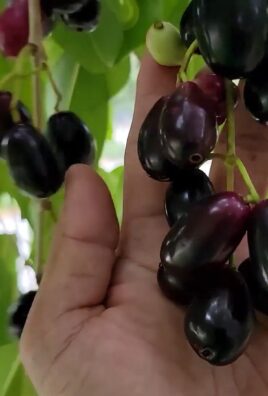
Leave a Comment